Trekking and hiking have been popular adventurous activities for nature lovers. But, many of us do not know if there is a difference between them or if they are both more of the same thing.
There’s a fine line that separates hiking and trekking. Let’s take you as a subject and find the main differences by comparing trekking vs. hiking.
Hiking: You go out in the countryside or on a hill, mountain, etc. Set up a camp, spend a full day or a night there, and return home. That’s hiking. In other words, it often involves walking in natural environments for a day or overnight.
Trekking: You pack your rucksack with essentials and go out for a long trip in a natural environment of more difficult mountains or hills for multiple days, weeks, or even months. That’s trekking. It allows you to take a break from your everyday lifestyle and indulge yourself in nature’s calmness and the beauty of it.
Can you see the main difference between the two?
Hiking is more of a one-day or overnight activity, while trekking usually takes at least three days. These are the key differences between trekking and hiking. But there are also some other differences in terms of difficulty, duration, accessibility, distance, etc. Let’s have a look at them.
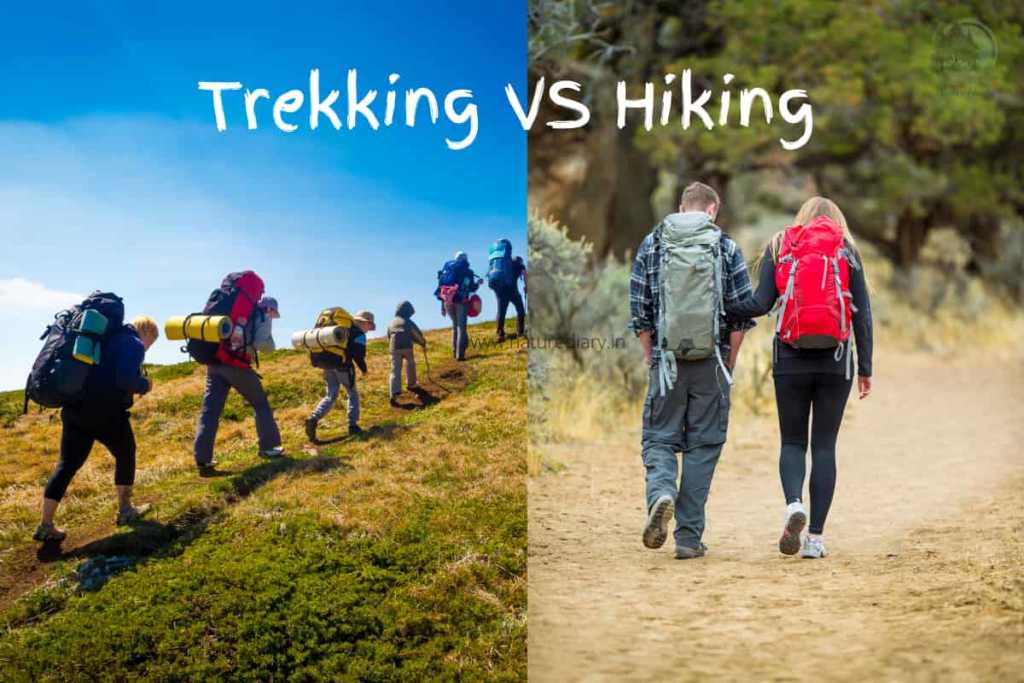
Trekking Vs. Hiking – The Key Differences
| Point of Difference | Trekking | Hiking |
|---|---|---|
| Difficulty | It is a journey with medium to hard difficulty. | It is a walk with easy to medium difficulty. |
| Duration | Lasts for weeks and even months. | Usually lasts a day or overnight. |
| Accessibility | Trekking destinations may involve places that are less accessible. | Most hiking destinations are easily accessible. |
| Distance | The total distance covered in trekking ranges from 30 km to more than thousands of kilometres. | The total distance covered in a hike usually ranges from 4 km to 50 km. |
| Purpose | It’s done to take a break from a normal lifestyle and to reconnect with nature, often in search of a moral significance. | It’s done just for fun and pleasure, merely a leisure activity. |
| Challenge | Trekking is physically and mentally challenging, it involves long and vigorous 3+ hours walk a day, for many days in a row. | Less demanding and not physically and mentally challenging, you just have to be able to walk a few hours. |
| Planning | Trekking involves a lot of pre-planning as you’ll be visiting a lot of towns and other locations. | Does not involve a lot of planning. |
| Gear | For trekking, you must have a rucksack with trekking essentials, waterproof shoes, poles, and any other survival kit you need. | A waterproof shoe and a light backpack are good for hiking. |
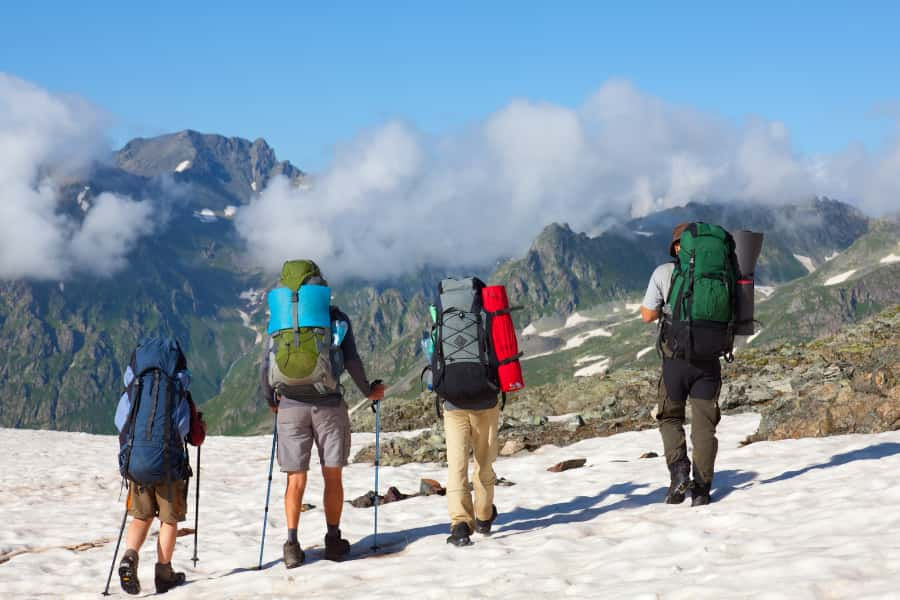
Trekking Vs. Hiking: Briefly Explained
You may have understood by now that trekking and hiking aren’t the same things. However, based on the points in the above table, let’s understand trekking and hiking briefly.
The Trails of Trekking and Hiking
Trekking trails are long and change during the course many times. The trekking destinations can range from mountains, hills, and forests to abandoned places and even beaches. It brings individuals to explore nature and trek to places that are normally inaccessible to people. The trekking trails aren’t marked for trekkers, giving them more liberty than hikers to go anywhere they want. Moreover, the destinations and distances in trekking are limitless, unlike hiking.
On the other hand, hiking trails are much shorter, and the locations are pre-planned and very limited. These trails often range from the midst of forests, hills, mountains, etc. Or you can choose any other natural environment worth visiting. However, you won’t have to spend a lot choosing your hiking destinations; these are usually marked for hikers.
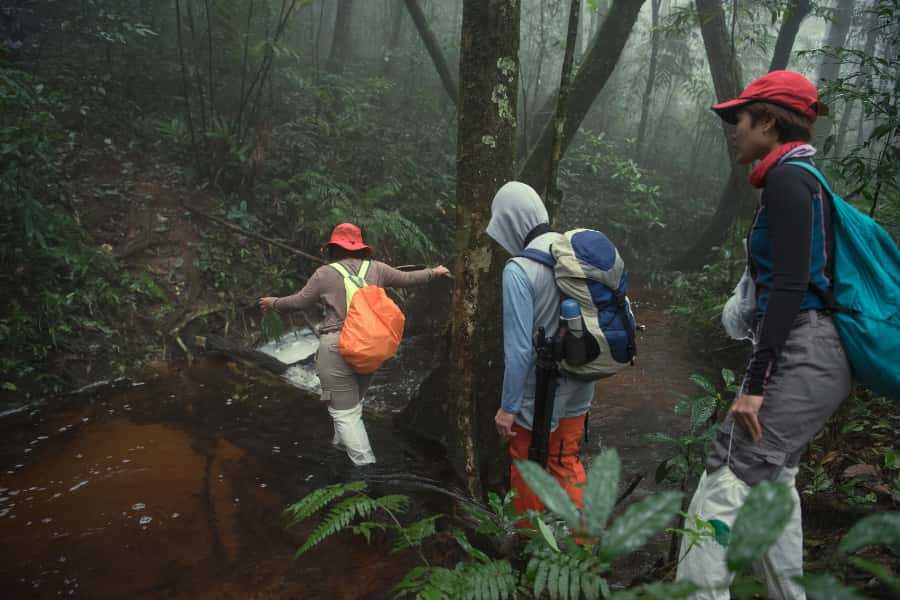
Duration of the Trip
As said, trekking involves multiple hikes at different locations, making it a multi-day journey rather than just an activity for fun. Trekking can last for days, weeks, or even months, depending on the destination. For example, trekking to Sandakphu will need at least 5 days to explore nature properly. However, there is practically no limit on the duration of a trekking trip.
In comparison, you can spend 2-3 days in a tent while on a hike, it typically lasts for a day or overnight. This involves less equipment and thus lasts only a few hours.
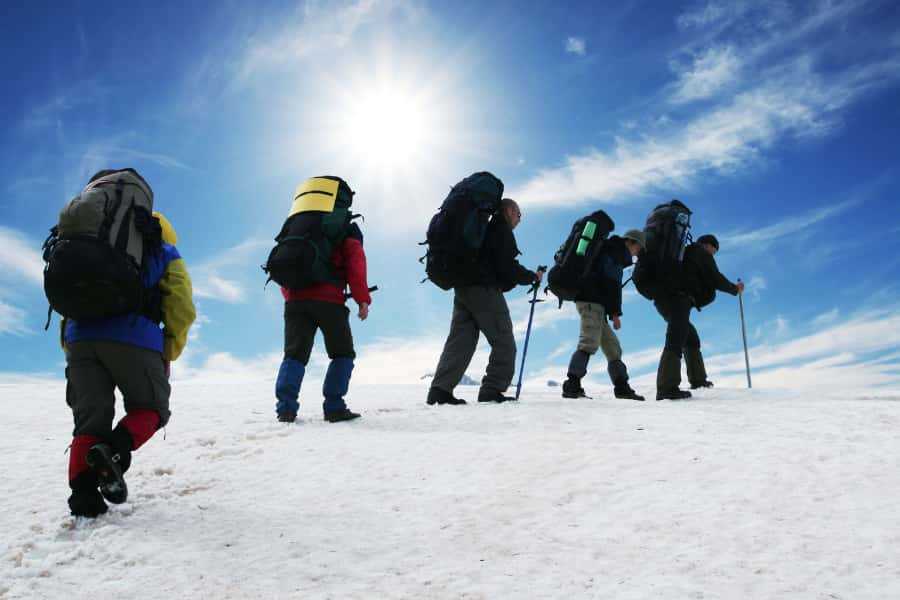
The difference in Distance and Location
Trekking allows people to explore places that are generally inaccessible to people. These locations can be abandoned temples, restricted areas, forests, etc. As for the distance, it can vary from 30 km to over a whopping thousand kilometres. However, unlike hikers, trekkers are free to go anywhere, and distance is not an issue for them.
Hiking locations are more accessible. These locations can range from hills, forests, etc. Unlike trekking, hiking destinations are marked and involve just a few hours of walking or travelling. The distance covered during hiking can range from 4 km to 50 km, depending upon the desired destination. In addition, hiking does not involve travelling to multiple locations at once, like trekking.
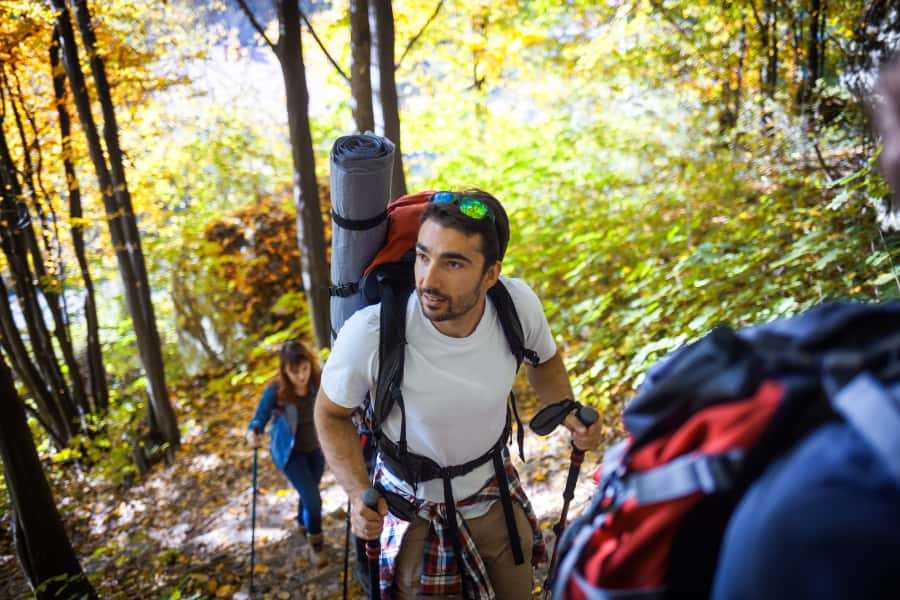
The goal of Trekking and Hiking
To find a deeper meaning of life and moral significance can be one’s primary reason to go trekking. Trekking in nature can significantly reduce stress, and freshen the mind and soul. However, it involves difficulties side by side.
The primary goal of hiking is to take a break from a regular 9-5 job and indulge in the calmness and beauty of nature. Hiking is for those who are just getting bored and want to spend their weekend amidst the beauty of nature. Hiking is more like a weekend trip. It’s mostly a fun and leisure activity and doesn’t usually have a moral or spiritual significance.
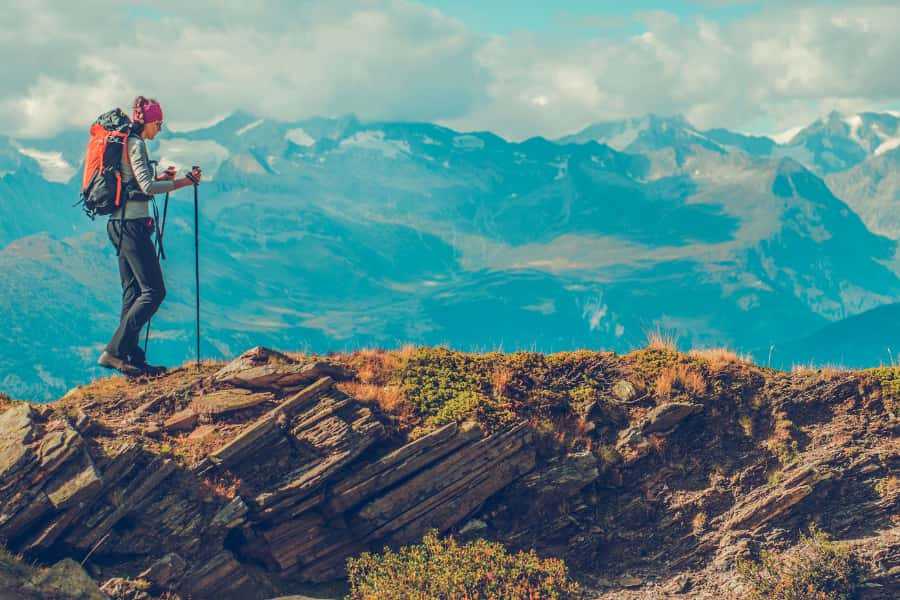
Stamina and Fitness
Trekking involves a lot of activities that challenge one’s physical and mental limits. Unlike hiking, not everyone can go on a such a trip; you have to be physically fit and mentally capable for trekking. As it involves long 3-8 hour walks per day for a few days in a row, going on a trekking trip is not an easy feat for most people.
Hiking is less intense and does not demand a lot of physical and mental strength. Anyone fit enough to walk a few hours can go on a hiking adventure. The activities involved in hiking are also less demanding and challenging.
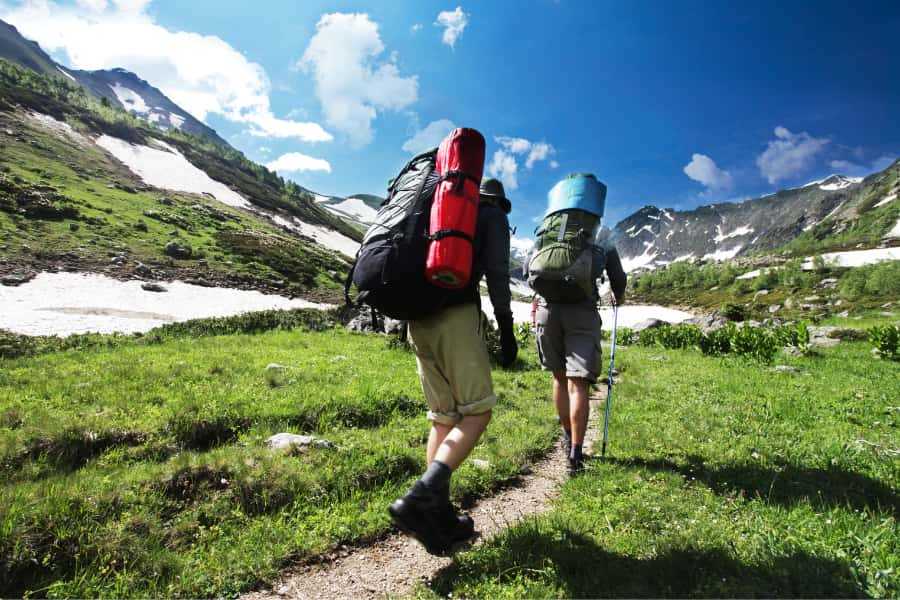
Planning and Organizing
Extensive planning is involved before venturing out for trekking. Trekkers have to mark out locations they intend to explore and routes they wish to take. Checking weather forecasts ahead of time and being prepared for any surprises is necessary.
But, as a normal hike usually lasts a day or two, it does not involve much planning. Just pack your backpack with a few essential items, and you’re good to go.
Trekking and Hiking Gear
Hiking does not require a lot of equipment to be carried. A regular 25 L backpack is enough to carry all the required stuff. The required equipment heavily relies on where you plan to hike and for how long.
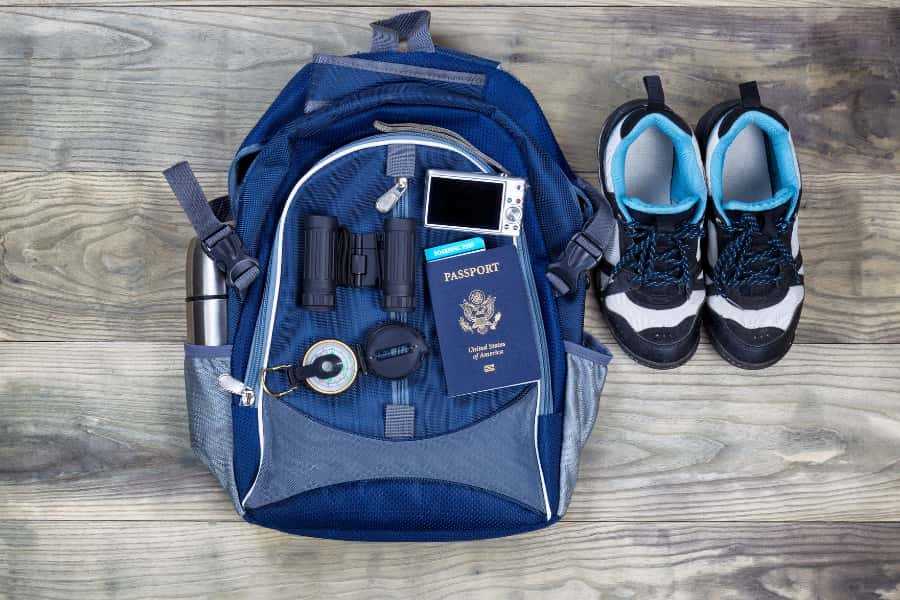
Hiking Gear
Backpack: A backpack is a prime requirement for hiking. You don’t need a heavy 40-50L backpack for it; just a regular 20-25L one will do the trick. After all, you have to spend a day on a hike; you won’t be required to carry a lot of food, water, and clothing.
Clothing and an extra pair of shoes: An extra pair of shoes and clothing is required in the case of surprising weather conditions. It’s advised to check the weather forecast before going out hiking.
Food and water: Pack food that gives you calories while taking less space, for example- Energy bars, nuts, etc. As for water, 2L per person is enough per day. Also, you can always refill your water bottles if needed.
First aid kit: Unexpected accidents can happen in even the most well-planned treks. It is, therefore, essential to carry some emergency first aid kits with you.
Tent: A camping tent will shelter you amidst dense forests or high mountains. The choice of tent also depends on the season in which you plan to trek. If it’s summer, a 3-season tent will work. In winter, your tent must be strong enough to withstand heavy wind and snow. It also must have a skirt to separate the cold ground and your body.
Sleeping Bag: Carrying a sleeping bag is necessary as you may have to sleep in a tent where the temperature is quite low.
Map and Compass: Navigation is essential when you’re going to unknown terrain. It Minimizes your chances of getting lost. Modern smartphones do include navigation tools, but it requires the internet to work. Hiking often involves going to places where the internet and cellular network aren’t available, so it’s better to carry a physical compass and map.
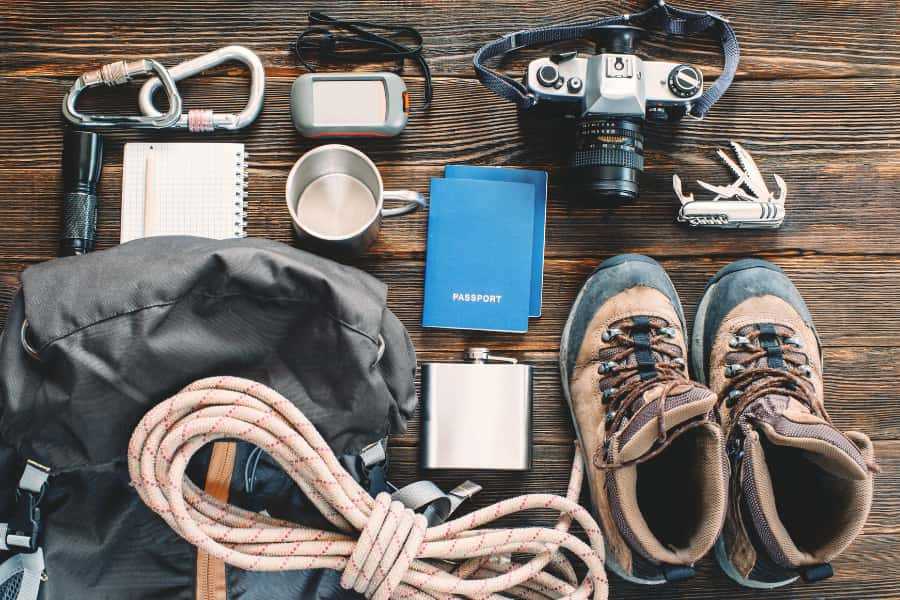
Trekking Gear
Both hiking and trekking require you to go off-road and into the great outdoors. That said, the required equipment is quite similar, but trekking involves a lot more clothing, a trekking jacket, footwear, food, and some extra items. Except for the trekking backpack and shoes, the rest of the above items are common for trekking too.
Rucksack: You will require the best rucksack with a 40-60 L capacity to carry all the essentials. You can carry a smaller one alongside this rucksack if you need it and your capacity permits.
Trekking Shoes: On rough terrains with pointy rocks, regular shoes aren’t that reliable. It’s better to get more than one pair of good quality trekking shoes to get you through the roughest of terrains.
Waterproof Gloves: A pair of waterproof gloves are a must if you trek in the snowy winter. You’ll be venturing out on rough terrains during the trek. A pair of gloves will help to avoid getting cuts and bruises on your hands as it will ruin the experience.
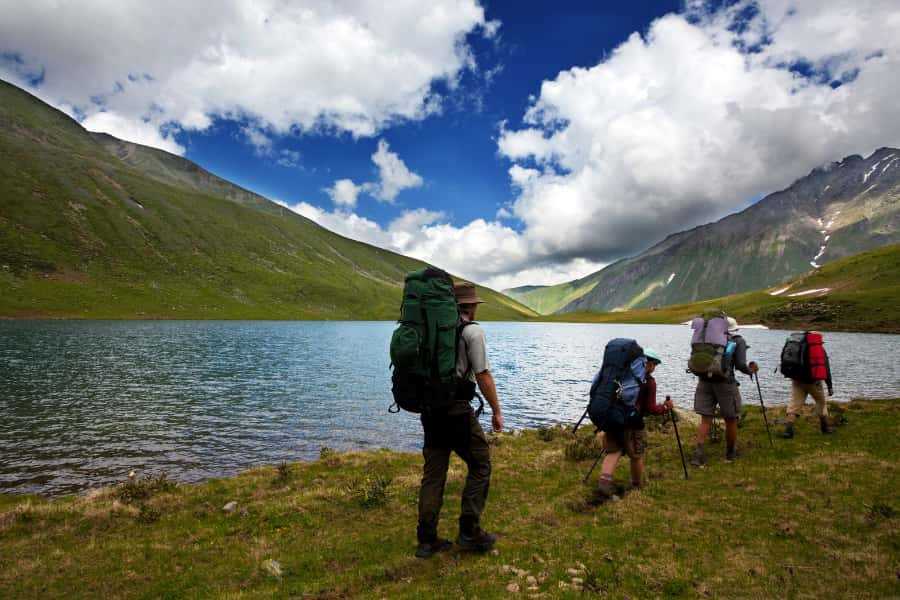
Benefits of Trekking and Hiking
Trekking and hiking are two activities scientifically proven activities that improve your physical and mental health. Among a long list of health benefits of trekking and hiking, here are some of them:
1. Lowers the Risk of Heart Disease
Hiking and trekking reduce heart disease, as suggested by a study conducted by CDC. It also minimizes the chances of a stroke while improving blood pressure significantly.
2. Improves Mental Health
Hiking and trekking let you take a break from the daily stress, depression, and anxiety and escape into the wilderness of nature. This helps you reconnect with nature which is proven to improve mental health and energize you from the inside. Going for a hike or trek once a year will help you keep your life in perspective.
3. Makes You Creative
Alongside the health benefits, hiking and trekking can also get the creative juices flowing again in your brain. In addition, these outdoor activities involve soaking a lot of Vitamin D, which is essential to improve focus and concentration.
4. Burns Calories
Hitting a trail can make you fit faster than a gym. It’s true! According to a detailed study by Livestrong, hiking burns 440 to 550 calories per hour. This will help you lose weight and get fit while enjoying the beauty and calmness of nature.
5. Boosts Bone Density and Overall Health
Since hiking and trekking involve long, vigorous walks, your bone density can significantly improve. It also makes your thighs, glutes, hip muscles, and hamstrings stronger. Moreover, it strengthens your core and improves body balance as you travel with a heavy backpack.
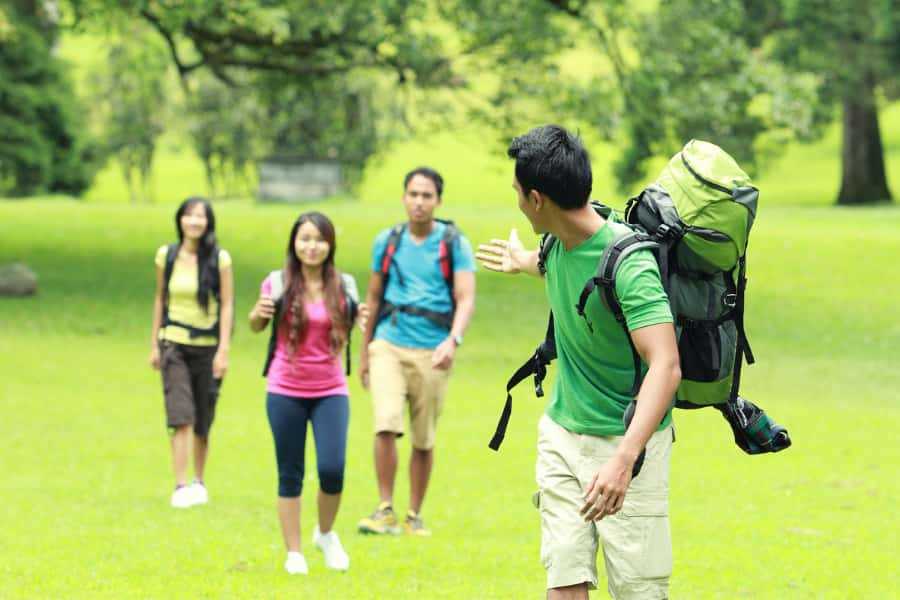
Hiking Vs. Trekking: Conclusion
By now, you must’ve understood the significant differences between hiking and trekking. The main factor that separates the two is that hiking involves venturing into rough terrains for a day, while trekking is a multi-day hike.
Hiking and trekking have different goals- One is just a fun and leisure activity while the other serves a greater purpose. Neither of these two activities can replace the other; both have equal importance.
Besides involving a lot of fun, hiking and trekking packs in a lot of health benefits. Experts proved that these two activities could significantly reduce the chance of getting heart disease while improving blood pressure. On top of that, it keeps your body in shape and obesity at bay.
With the differences set aside, a true adventurer loves and respects both activities. That being said, hiking may not involve a lot of adventure, but it’s not convenient to go trekking every next weekend either.